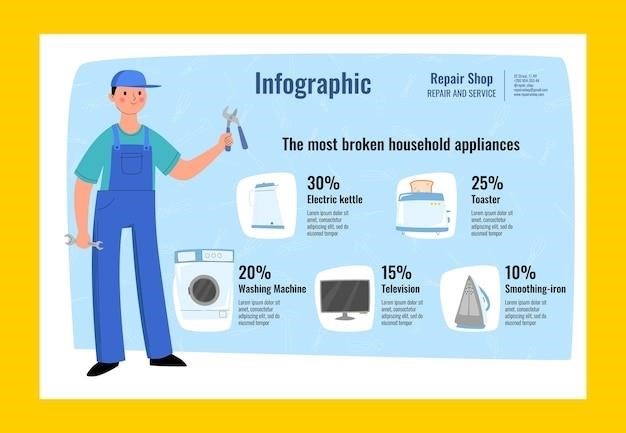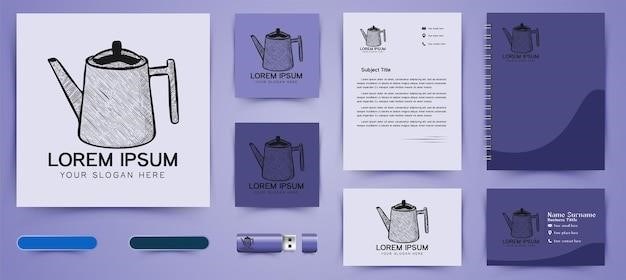
GE UltraFresh Washer⁚ A Comprehensive Guide
This guide covers troubleshooting, maintenance, and utilizing smart features of your GE UltraFresh washer. Learn about the UltraFresh Vent System, cleaning the pump filter, accessing online manuals, and contacting GE customer service for support and repair.
Understanding the UltraFresh Vent System
The GE UltraFresh Vent System is a key feature designed to combat the persistent problem of mold and odor in front-load washers. Unlike traditional washers that retain moisture after cycles, the UltraFresh system actively circulates air throughout the machine, effectively drying the interior components. This process significantly reduces the humidity levels within the washer, thereby preventing the growth of mildew, mold, and bacteria, which are common culprits behind unpleasant smells. The system’s effectiveness is further enhanced by its integration with the OdorBlock technology. This combination ensures that even when the washer door remains closed for extended periods, the interior remains fresh and clean. The UltraFresh Vent System is activated automatically at the end of a wash cycle, providing a thorough drying process, helping to maintain the hygiene and longevity of your appliance. Regular cleaning of the pump filter and adherence to the manufacturer’s recommendations will maximize the effectiveness of the UltraFresh Vent System.
Troubleshooting Common Issues
Encountering problems with your GE UltraFresh washer? Let’s address some common issues. If your washer won’t start, check the power supply, ensure the door is properly latched, and inspect for any error codes displayed on the control panel. Consult your user manual for code definitions and troubleshooting steps. A malfunctioning drain pump can lead to incomplete drainage or overflowing. Verify proper drainage connections and clear any clogs. Unusual noises during operation might indicate issues with internal components; refer to the manual’s troubleshooting section for guidance. If clothes are not adequately cleaned, check the detergent dispenser for clogs and ensure correct detergent usage. Persistent odors despite using the UltraFresh Vent System might suggest a need for thorough cleaning of the machine’s interior, including the pump filter and rubber gasket. Remember to always disconnect power before performing any internal inspections or cleaning.
Maintenance and Cleaning Procedures
Regular maintenance is crucial for optimal performance and longevity of your GE UltraFresh washer. To prevent mold and mildew growth, wipe down the interior drum and rubber gasket after each use with a clean, damp cloth. Periodically, run a cleaning cycle using a washing machine cleaner designed to remove detergent residue and eliminate odors. This helps maintain the effectiveness of the UltraFresh Vent System. Check and clean the lint filter regularly to ensure efficient water drainage. Inspect the detergent dispenser for any clogs or residue build-up, clearing them as needed. For a thorough cleaning, consult your user manual for instructions on accessing and cleaning the pump filter. This often requires removing a panel at the bottom front of the machine, but the process is relatively straightforward. Remember to always unplug the appliance before undertaking any maintenance activities to prevent electrical hazards.
Accessing and Cleaning the Pump Filter
Cleaning the pump filter is essential for maintaining your GE UltraFresh washer’s efficiency and preventing clogs; Most front-load models provide easy access to the filter located at the bottom front of the unit. However, some models may require professional service for filter access. Your owner’s manual provides specific instructions for your model. Before starting, always disconnect the power supply. Locate the access panel, usually requiring removal of a small panel or cover. Place a shallow pan or towel underneath to catch any spilled water. Carefully open the filter access and remove the filter. Inspect for any debris, such as coins, buttons, or lint. Rinse the filter thoroughly under running water, ensuring complete removal of any blockage. Reinstall the filter securely, ensuring a tight seal. Close the access panel and reconnect the power supply. Regular cleaning, as indicated in your manual, will prevent costly repairs and ensure optimal performance of your GE UltraFresh washer.
Utilizing Smart Features (if applicable)
Many GE UltraFresh washers offer convenient smart features enhancing the laundry experience. If your model includes WiFi connectivity, download the GE Appliances mobile application. This app allows for remote cycle monitoring, starting and stopping washes, and receiving alerts. You can also personalize wash cycles, save preferences, and troubleshoot issues directly through the app. SmartDispense, if available, automatically dispenses the correct amount of detergent and fabric softener, optimizing wash performance and eliminating manual measuring. Some models incorporate features like cycle recommendations based on the type of laundry and soil level. The app frequently provides updates and new features. Ensure your washer is connected to a stable WiFi network for optimal performance. Consult the online manual or app for detailed instructions and troubleshooting assistance to fully leverage your washer’s smart capabilities. Remember that specific features vary depending on your model.

Model-Specific Manuals and Resources
Finding the correct manual for your specific GE UltraFresh washer model is crucial for optimal use and troubleshooting. Utilize the GE Appliances website and online resources to locate your model’s manual and access support documentation.
Finding Your Washer’s Manual Online
Locating your GE UltraFresh washer’s manual online is straightforward. Begin by visiting the official GE Appliances website. Their support section usually features a search bar where you can input your model number (located on a sticker inside the washer door or on the back). This precise model number ensures you access the correct, detailed manual specific to your machine’s features and functionalities; Once you’ve entered the model number, the website should promptly display the relevant documentation, often available as a downloadable PDF. Alternatively, you may find your model’s manual on third-party sites offering appliance manuals; however, always verify the authenticity and accuracy of the information provided on these sites, as some may be outdated or incorrect. Remember, using the official GE website guarantees the most accurate and up-to-date instructions for your GE UltraFresh washer.
Using the GE Appliances Website for Support
The GE Appliances website offers a comprehensive support system beyond just manuals. This resource provides access to troubleshooting guides, frequently asked questions (FAQs), and video tutorials covering various aspects of GE appliance operation and maintenance. For specific issues with your UltraFresh washer, use the website’s search function to find relevant articles. The FAQs section often addresses common problems, saving you time and potentially resolving minor issues independently. If you need more detailed assistance, the troubleshooting guides offer step-by-step instructions for diagnosing and resolving more complex problems. The website also features video tutorials demonstrating proper cleaning, maintenance, and operation procedures for your GE UltraFresh washer. Should you require further assistance after exploring these resources, the website provides contact information for GE customer service, allowing you to reach out directly to a representative for personalized support.
Troubleshooting Guides and FAQs
GE Appliances provides extensive troubleshooting resources to help resolve common issues with their UltraFresh washers. These resources are readily available online through the official GE Appliances website and often include detailed FAQs addressing frequently encountered problems. These FAQs cover a wide range of topics, from simple operational questions to more complex malfunctions. Many troubleshooting guides provide step-by-step instructions and visual aids to help users diagnose and fix problems independently. These guides often address issues such as the washer not starting, unusual noises during operation, or problems with the dispensing system. By utilizing these resources, you can often resolve minor issues without needing professional assistance. If the problem persists after following the troubleshooting steps, detailed information on contacting GE customer service for further support is also available. Remember to note the model number of your UltraFresh washer for accurate and targeted troubleshooting.
Contacting GE Customer Service
If you’re unable to resolve a problem with your GE UltraFresh washer using online resources or troubleshooting guides, contacting GE customer service directly is recommended. Their customer support representatives are trained to handle a wide range of inquiries and technical issues. You can typically reach them via phone, email, or online chat, finding contact information readily available on the GE Appliances website. Before contacting them, gather necessary information like your washer’s model number and serial number, which can usually be found on a sticker inside the washer’s door or on the back panel. Having this information readily available will expedite the troubleshooting process. Clearly describe the problem you are experiencing, providing as much detail as possible. If applicable, mention any troubleshooting steps you’ve already taken. GE customer service may offer further troubleshooting advice, schedule a service appointment with a qualified technician, or provide information about warranty coverage and repair options.
Repair and Maintenance Resources
Beyond the readily available online manuals and troubleshooting guides, GE offers several resources to aid in the repair and maintenance of your UltraFresh washer. Their website often features video tutorials demonstrating common maintenance procedures, such as cleaning the pump filter or addressing minor issues. These videos offer a visual aid, complementing the written instructions in the user manual. Additionally, GE may provide links to authorized service centers and repair technicians in your area. These professionals are equipped to handle more complex repairs that may require specialized tools or expertise. Remember to check for warranty information specific to your model; GE warranties can cover certain repairs or parts replacements within a specified timeframe. For extensive repairs or if your washer is beyond its warranty period, researching local appliance repair shops or contacting GE for authorized service centers is recommended. Proactive maintenance, as outlined in your user manual, can prevent many common issues and extend the life of your GE UltraFresh washer.



























